Vintage Machinery: New Life for Old Iron
To many woodworkers, rebuilding machinery has become an addiction all its own
There are many advantages to buying vintage machinery. First, you often can get an industrial-quality tool for pennies on the dollar, compared to its modern counterpart. You get a lot of cast iron, which makes for a heavy-duty piece of equipment that won’t transmit vibrations like the composites or lighter metals used in contemporary machinery. That translates to better results. It’s also hard to deny the beauty of vintage machines, crafted in an era when over-the-top flourishes and high design were critical to capturing the attention of would-be buyers.
But there’s a trade-off. It takes some effort and know-how to get these old machines back into working order. To many woodworkers, rebuilding machinery has become an addiction all its own, a fact I learned this summer while trying to fix up my 1940s-era drill press. Websites like vintagemachinery.org, owwm.org, and others have a vast array of old manuals, repair guides, and discussion forums to help those willing to give these old soldiers a new lease on life. Here’s a sample of what’s possible—from mega-machines to practical choices for a small home shop.
1923 Crescent Universal Wood-Worker (Model No. 108 )
Shane Whitlock, Perry, Utah
|
BEFORE |
AFTER |
This early take on a combo machine originally comprised a 26-in. bandsaw, 12-in. jointer, 12-in. tilting-top tablesaw, 3/4-in. shaper, and a borer, although the borer was long ago removed from this particular machine. A 7 1/2-hp, three-phase motor powers everything through a belt-driven lineshaft that allows each machine to work simultaneously, or one at a time. After dismantling and sand-blasting the parts, Whitlock polished every nut and bolt and replaced all 200 of its steel washers with brass versions that he turned himself. He also poured new babbitt bearings for the drive mechanism, bandsaw, jointer, shaper, and tablesaw. He even polished and painted the pulleys and hand-stitched new leather belts before painting the machine satin black with gold pinstripes. A veteran of numerous machine restorations, Whitlock said the toughest thing to do with this heavier-than-a-ton Crescent was move it around. Fortunately, he won’t have to: It’s now on display in the lobby of the former lumber mill where it was used originally.
1950s-era Wadkin PK tablesaw
Jack Forsberg, Ottawa, Ont., Canada
|
|
|
|
BEFORE Auction score. Forsberg bought his dream saw for $100 in an auction at one of Canada’s older furniture making companies. |
BEFORE Designed for big cuts. The huge cast-iron sliding table allows the saw to crosscut thick slabs up to 36 in. wide. |
|
AFTER |
|
With its 18-in. blade and sliding table, this unique British-made tablesaw was geared toward patternmakers, engineering firms, and other industries with a need to dimension large timbers. Although these saws were discontinued in the 1960s, the Wadkin PK has safety devices and creature comforts sought after in contemporary saws, such as a true riving knife, an overarm blade guard, and the ability to add a zero-clearance insert to the sliding table. Forsberg, an English machinery enthusiast with a workshop full of Wadkin equipment, said he spent years looking for one before winning this saw for $100 in an auction at a large furniture company. The machine got a complete rebuild and paint job, including the hand-painted machine tags and cast letters. Forsberg also reworked and polished all of the handles and added a brass and rosewood fence and a tenoning jig of his own design.
1910-1915 Crescent Angle Bandsaw
William Thomas, Rindge, N.H.
|
|
Thomas spent three years meticulously restoring this bandsaw to resemble something close to what came out of Crescent’s factory just before the start of World War I. After repairing the dovetailed ways that attach the table to the saw, Thomas, a professional furniture maker, fabricated replacement parts, including the two giant wheel guards he made from wood. The lettering on the upper guard was reproduced and cut with the help of students in a high school shop class. Although the angle bandsaw was originally marketed to boat builders, this one was being used in a small cabinet shop in central Massachusetts when Thomas found it. He uses it for ripping, resawing, and other general shop tasks.
1936 Delta 14-in. drill press (Model No. 1302)
Barry Willis, Cumming, Ga.
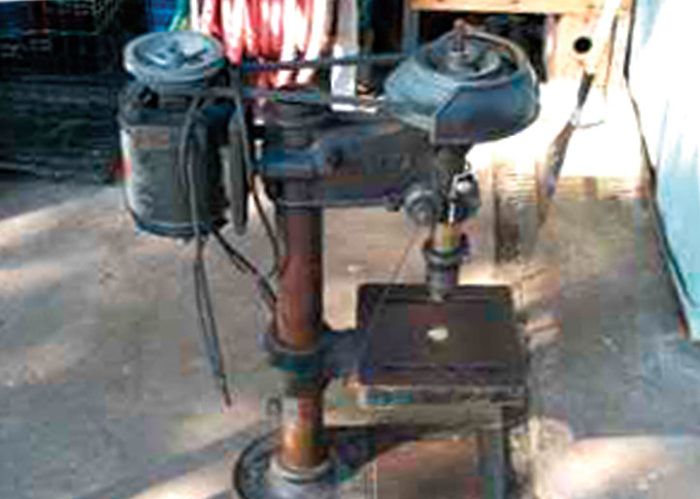 |
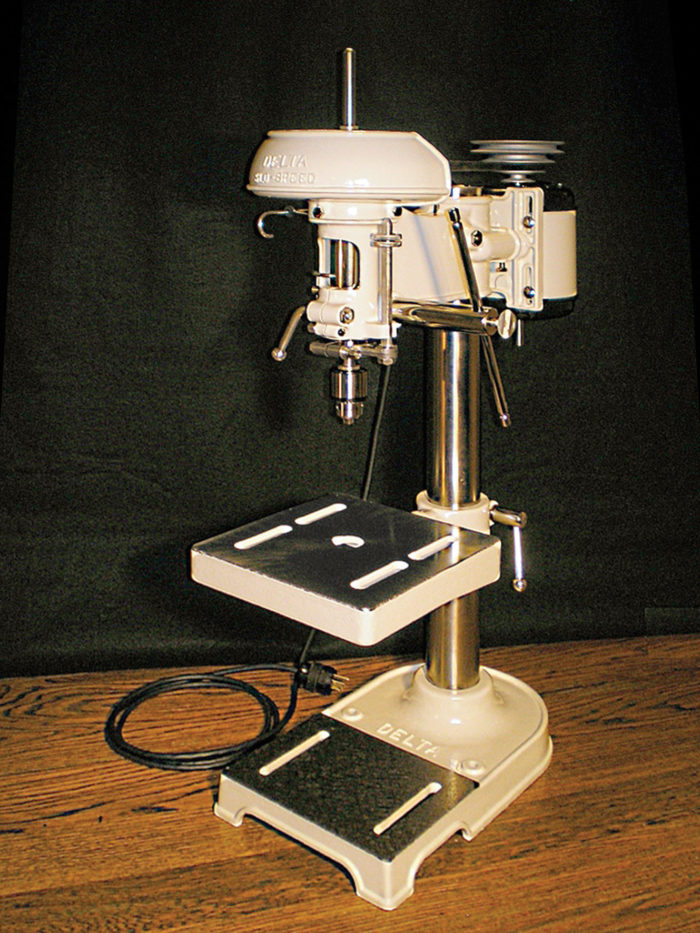 |
|
BEFORE |
AFTER |
|
Diamond in the rough. Willis paid $100 for this rusty but still working drill press. |
|
It took Willis about $230 and four weekends to restore this “Slo-Speed” benchtop drill press, which he found through a Craigslist ad. After putting new bearings in the 1⁄3-hp motor and replacing the chuck, he filled a few holes in the table with pipe plugs and epoxy before re-machining it. He also polished all of the metal parts and finished off the machine by painting it white. Although he restored the drill press to showroom shape, Willis uses it regularly in his home shop.
1945 Delta Unisaw (1 hp)
Ken Lewellyn, Hendersonville, Tenn.
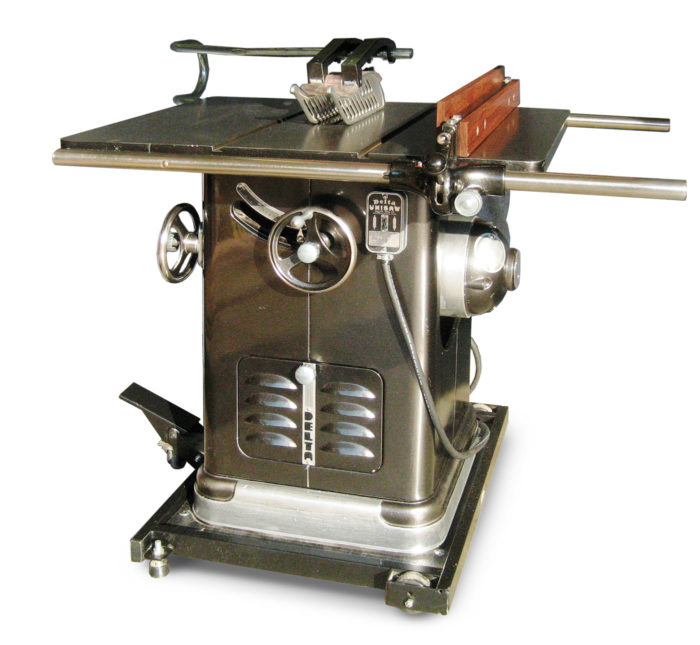 |
Lewellyn is a self-described weekend warrior who had wanted a nice tablesaw for a long time but didn’t do enough woodworking to justify its cost. That changed when he needed a big saw to build a new dining-room table. He drove 250 miles to Verona, Ky., to pick up this saw after seeing an ad on Craigslist. To restore it, he removed every nut and bolt, and cleaned, painted, or polished every component before reassembling it. He also replaced the belts, bearings, and anything else that appeared worn or broken. Lewellyn spent about $1,000 and two months of work restoring it, and he credits the message board and online publications of owwm.org and vintagemachinery.org for helping him to get it done. “The great thing about old machines is that everything can be accessed and replaced, [and] a lot of the hardware can be purchased at the local hardware store,” he said.
1949 General Jointer (Model No. 180)
Benoit Côté, Saint-Hubert, Que., Canada
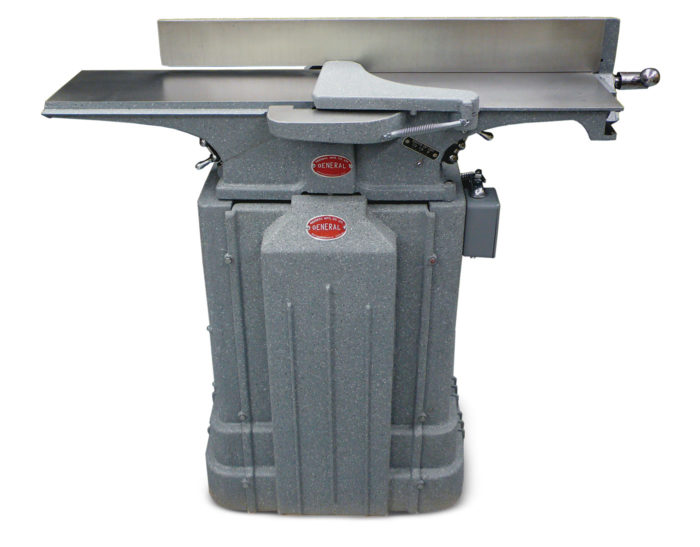 |
This 37-in.-long, 6-in.-wide jointer, which is powered by a 1⁄2-hp motor, was built in the Drummondville factory near Côté’s home. He spent about 200 hours restoring the machine, which has a rare cast- iron base that helps it to run almost vibration-free. He disassembled it and sandblasted or stripped the
parts before priming and painting the jointer based on an original factory color scheme. He started with a dark gray enamel, followed by a light spray of Stone Grey Rust-Oleum and a coat of semi-clear varnish sealer. Côté also polished the tables and machined surfaces, and swapped out the bearings, knives, and V-belts before reassembling the machine and putting it to use.
1950 Boice Crane Bandsaw (Model No. 2309)
Dan Swartz, New Sewickley Township, Pa.
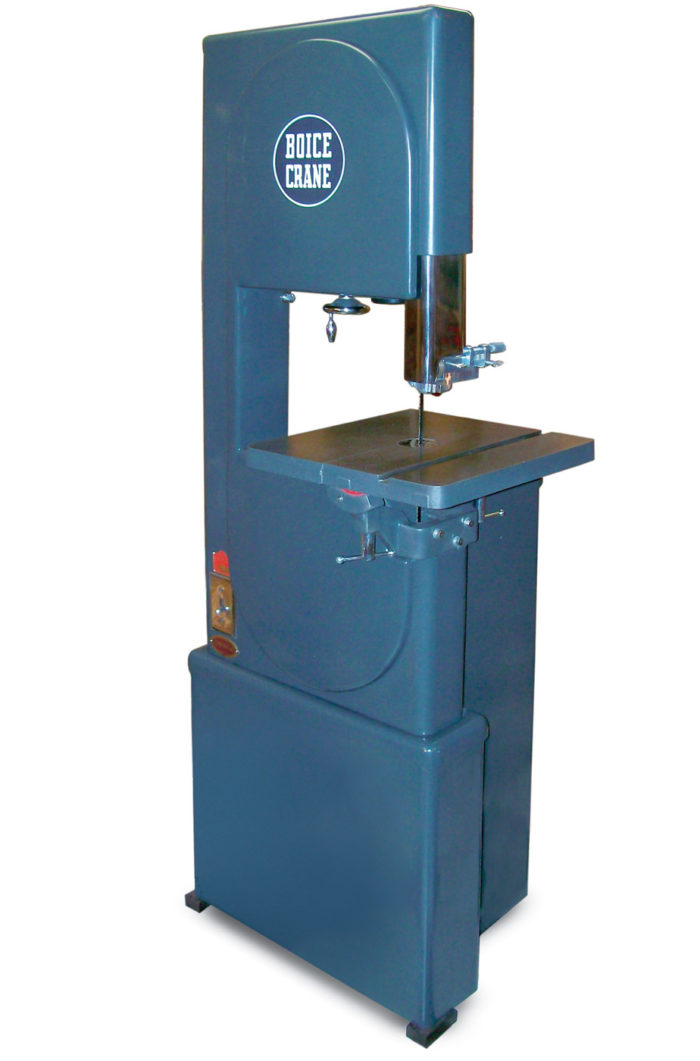 |
Swartz bought this 14-in. bandsaw for $75 at a garage sale in the 1980s, but didn’t have to rebuild it until last
year when the bearings and tires started to show their wear. He installed new bearings and transmission seals before repainting it and polishing the hardware and other metal. He also added a light inside the upper wheel housing (an original accessory), and replaced the power cord and the drive belt. All told, he spent about 80 hours restoring the machine, not including the time spent at the computer reproducing new decals from photos of other machines he found online. The relatively cheap restoration was a great deal, he said. The heavy steel-plate construction and copious amounts of cast iron, plus the new bearings and tires, make for very smooth cuts.
1968 Delta/Rockwell Scrollsaw (Model No. 40-440)
Kenneth Cary Falk, Camas, Wash.
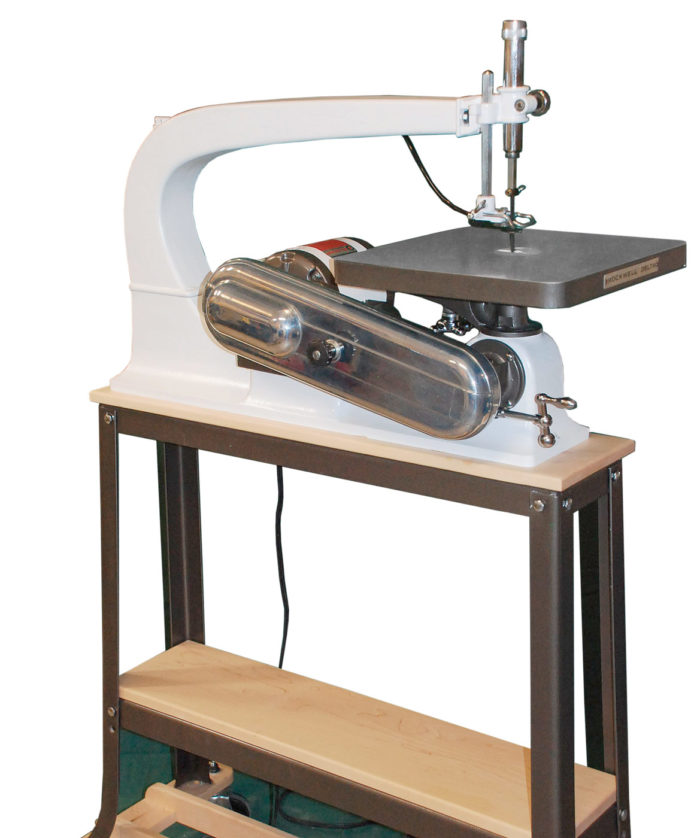 |
Falk found this 40–440 scrollsaw on Craigslist during a trip through Seattle. The saw, which dates to 1968, has a 24-in. throat and 1⁄3-hp motor with variable speed control. Falk likes the older saw because it has a lot more cast iron than newer models, with all the advantages that extra mass brings. Falk replaced the pulley and motor bearings, changed the oil and gaskets in the oil bath, and repainted it white and hammered bronze using a few cans of Rust-Oleum. He also added a maple top and shelf to the base.
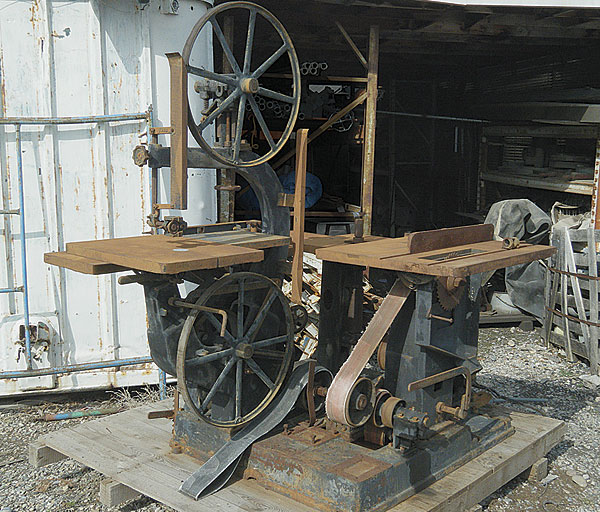
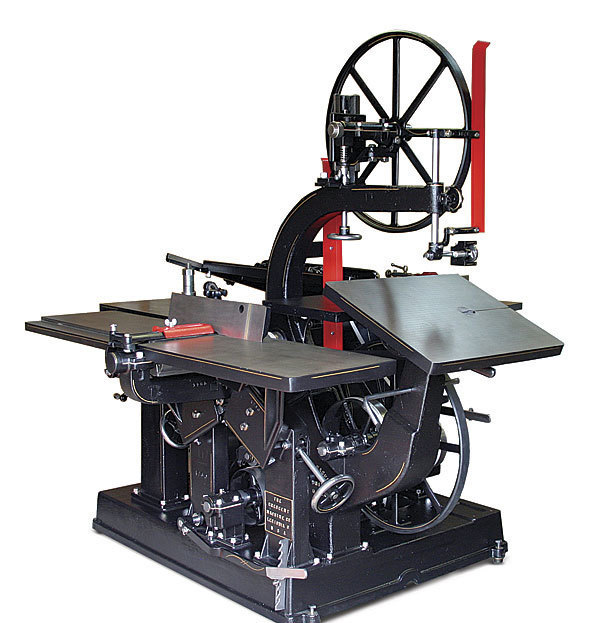
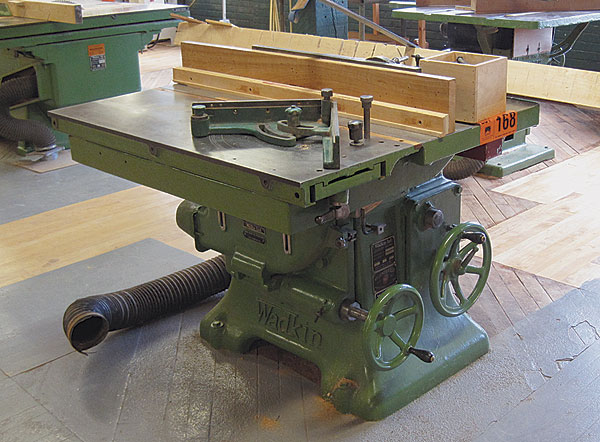
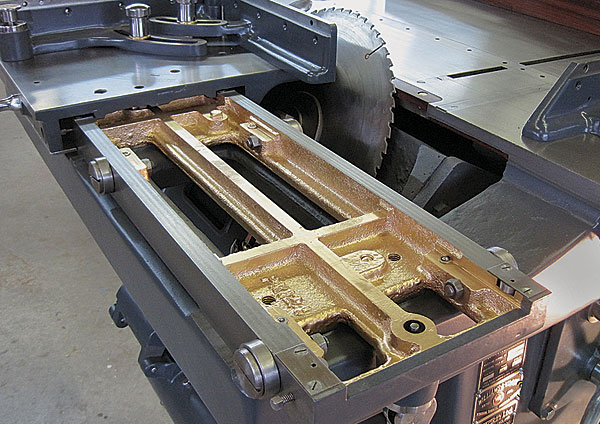
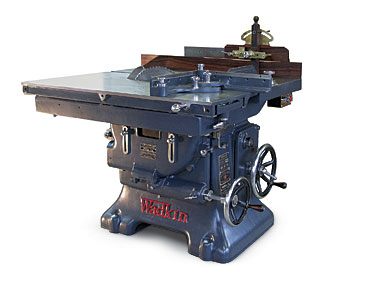



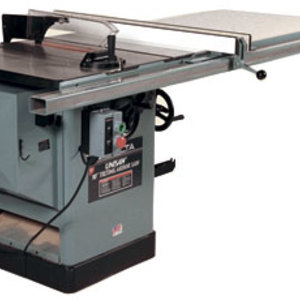
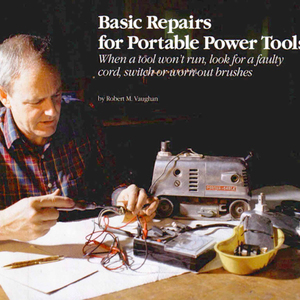














Comments
check out a cool website on this subject:
http://www.vintagemachinery.org
I came across it while restoring a 70 year old Sprunger Bros. DP.
Log in or create an account to post a comment.
Sign up Log in